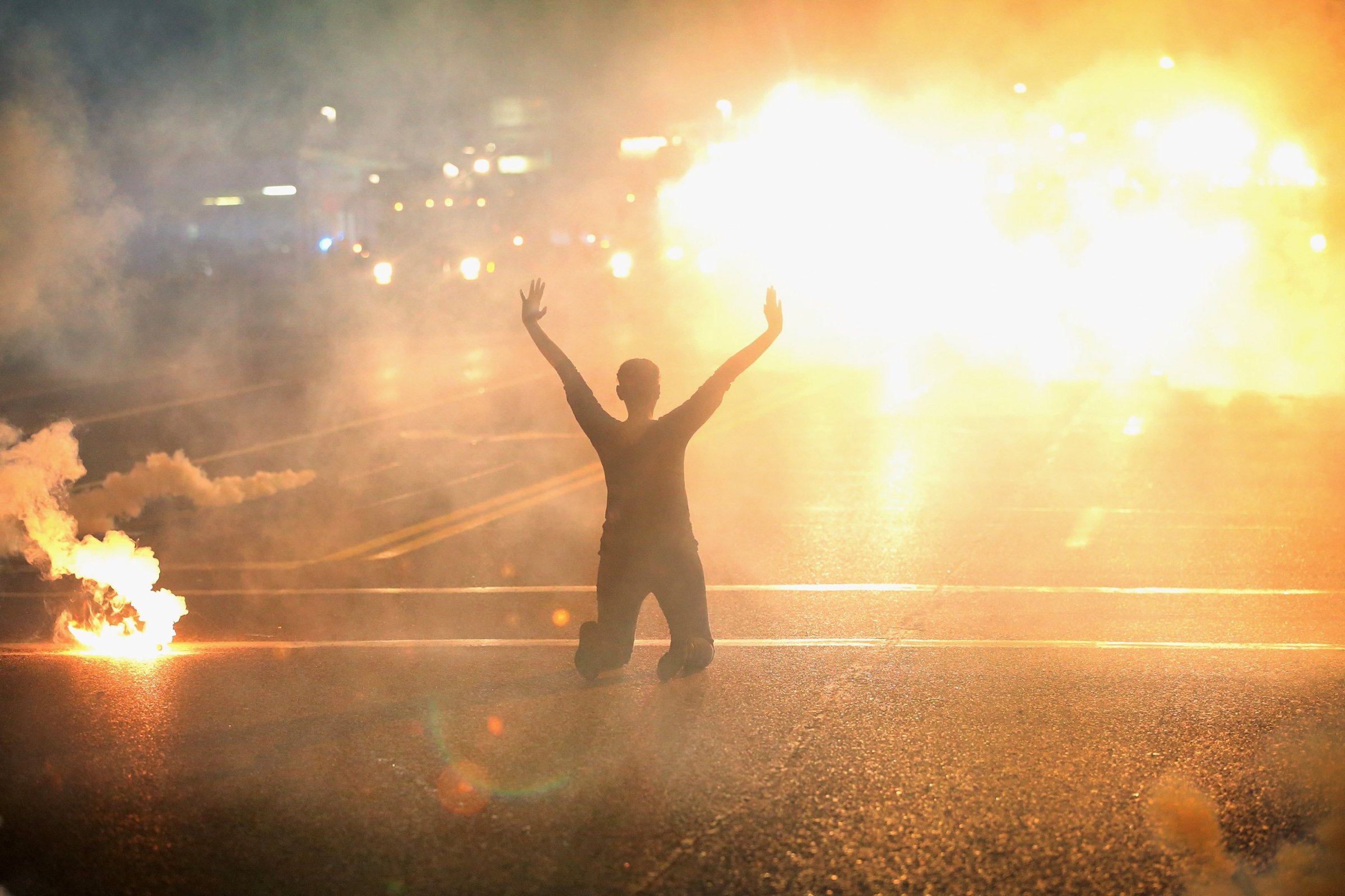
As a young black man, a certain chill runs down my spine every time I cross paths with a police officer on the streets of New York City. Police officers seem to select my backpack for random search on the subway, and requests that I do simple things like cross the street are often accompanied by the threat of arrest or worse. Pedestrians often aren’t much better and cross the street late at night to avoid crossing my path.
Some of this should probably be attributed to outright racism. But there’s also a subtler cause at work. Many Americans, black and white, are primed to view black men as violent and dangerous. Priming is a process in which experiences or memories lead people to connect two things. Of course, most people wouldn’t admit that feeling, but the instinct is there, lurking in the subconscious, a remnant of centuries-old entrenched prejudice.
What would it take to turn that around? Can the recent, non-stop coverage of incidents of police brutality against black men change the way the public is primed to view police, black men and the fraught relationship between the groups?
For the last two decades, the Implicit Association Test has tried to measure the sort of bias that comes with split-second decisions by asking participants to quickly sort faces as well adjectives. It turns out it’s a lot easier to group white people and positive adjectives together than black people with the same words. Some 75% of test takers have some bias towards whites over blacks, the research has found.
“The media presentations of blacks typically emphasize criminality and other kinds of negative depictions,” said John Dovidio, a Yale psychology professor. “When you grow up with repeated exposure like that you begin to form these associations, these stereotypes.”
Yet in the cases of the deaths of Freddie Gray, Walter Scott, Tamir Rice and so many other unarmed black men, the media has portrayed police officers as incompetent at best and cold-blooded killers at worst. Dovido, who leads an interdisciplinary lab on diversity, told me that the repetition of incidents of police misconduct makes humans more likely to observe and comprehend a pattern.
“It’s occurred repeatedly. It’s been very vivid. It’s happened in very geographically diverse areas. As a logical human being, when things are repeated you logically begin to associate these characteristics with the group.”
Polling seems to back up Dovido’s point. A majority of white Americans, 56% to be precise, saw the August death of Michael Brown in Ferguson as an isolated incident. Only 36% said the same thing after the death of Freddie Gray in Baltimore in April.
But even if police misconduct is in the public consciousness today, that doesn’t mean it will stay there when the news fades from the headlines. In fact, academics debate the permanence of such memories. Dovido argues that the different perceptions combine and create more nuanced, perhaps more accurate, understandings of reality. Instead of discarding one view, people make them fit together, he said.
That’s comforting. I don’t like a world where I’m assumed to be a criminal, but I’m also frightened by the possibility of the public assuming police are always in the wrong. That world seems dangerous, and, indeed statistics suggest that it may be. Cities that have experienced media events surrounding incidents of alleged police brutality in recent months, such as Baltimore and New York City, have seen a dramatic drop in arrests and police stops. There’s also been a spike in violent crime. Baltimore, for example, saw more murders last month than any month in 40 years.
But some, like Rice University emeritus psychology professor David Schneider, don’t think people are likely to internalize the news at all. It takes more than six months of bad news coverage to reverse perceptions that have built up over a lifetime, they say. “Public opinion is ephemeral,” said Schneider, the author of a book on the psychology behind stereotyping. “People’s attitudes change very quickly but often regress to where they were before.”
Let’s say that these incidents really have changed the way the average American thinks about law enforcement and the treatment of black men. At the end of the day, it may not mean all that much in practical terms for victims of police brutality.
“If you’re African American, there’s no priming from the media,” said Travis Dixon, an associate professor at the University of Illinois at Urbana-Champaign. “There’s just the reality that police treat you differently, that police suspect that you are engaging in criminal behavior when you’re walking down the street, when you’re driving, when you’re existing, and that is just totally reality.”
Dixon is right, of course. But then I think about a scene I witnessed a few weeks ago—a black man in the hands of the cops and a crowd of mostly white onlookers demanding the officers explain their actions. When I asked one onlooker what he’d seen, he said the police had swooped in and thrown the man against the wall, providing no reason for the arrest. The crowd demanded the officers give their badge numbers, and they told the man they’d follow up. I don’t know what prompted the arrest, or what eventually happened to the man, but the split-second decision to look after one another can never be a bad thing.
More Must-Reads from TIME
- Cybersecurity Experts Are Sounding the Alarm on DOGE
- Meet the 2025 Women of the Year
- The Harsh Truth About Disability Inclusion
- Why Do More Young Adults Have Cancer?
- Colman Domingo Leads With Radical Love
- How to Get Better at Doing Things Alone
- Michelle Zauner Stares Down the Darkness
Write to Justin Worland at justin.worland@time.com